#dioscorea communis
Video
Black Bryony by Oliver Andrews
Via Flickr:
Bright red berries of black bryony winding through the hedgerow in the fields near Short Wood.
#autumn#autumnwatch#berries#berry#black bryony#canon#canonuk#dioscorea communis#flora#fruit#nature#nature reserve#northamptonshire#northants#outdoors#plant#plants#short wood and southwick wood#tamus communis#wildlife#wildlife trust#wildlife trusts#wood#woodland#woods#Peterborough#England#United Kingdom#flickr
2 notes
·
View notes
Text

Theseus
Theseus, scarecrow oath of the watchers paladin and shepherd of souls, belongs to @eaudecrow
Flowers
Asphodel (Asphodelus): the land of spirits. In Greek mythology, a field of asphodels in the underworld was the dwelling place of neutral souls.
Dame Violet (Hesperis matronalis): watchfulness
Black bindweed (Dioscorea communis): support
Boxwood (Buxus): Constancy in friendship. Labyrinthine hedge mazes are traditionally made of boxwood shrubs.
Rattlesnake root ( Prenanthes purpurea): protection, shield, guarded steps. This plant was thought to grant protection from being caught up in a group of supposed to “friends” who are in actuality threatening and dangerous.
Heath (Epacris impressa): solitude
Witch hazel (Hamamelis virginiana): a spell is on me.
Straw: constancy. Broken straw: broken contract, trouble.
Corn poppy (Papaver rhoeas): good and evil, light and darkness, life and death, fun-loving, avoidance of problems, oblivion. The ancient Greeks believed that corn would not grow without poppies growing nearby. In Greek and Roman myths, poppies were used as offerings to the dead and in modern times are often a motif found on tombstones. Poppies are some of the first flowers to fill holes in disturbed ground, so old battlefields often fill with poppy.
Giant milkweed (Calotropis procera): purposelessness, a monstrosity
Check out the rest of the Pringles Party!
Yancy | Izen | Phaela | “Red”
#planar Pringles#floriography#dnd character#dnd pc#dnd character portrait#dungeons and dragons#language of flowers#warforged#paladin#You know what I love? Flowers! Symbolic character portraits! D&D!! Furiously committing to ambitious passion projects!#and thus here we are#if I do not post this now I will forget Again#Hay Boy 10 hour version plays (it’s me hitting play every minute)#MOST beloved and important scarecrow OF all time and history. fascinates me#my art#Pringles#Theseus#Theseus Pringles#the tumblrinas get the sparknotes and not the full essay interpretation. unless they ask really niceys and Crow says it’s okay
391 notes
·
View notes
Note
no idea what timezone you exist in, so this may be somewhat late, but hey, it's still clanmew day for me, so have some oc name translations that i did my best on!
coyotesong - uruooyanaya - wolf song-present-tense (no translation for coyote)
star sightstalker - shai pipohhass - star sight sneaky (no translation for stalk as in to stalk prey)
spiralstrike - lyyfkubo - daydream strike-hit (spiral in this context refers to its habit of confusing enemies before attacking, sometimes lulling them into a false sense of security, as well as how it tricked its entire clan into believing it was Normal and Well-Adjusted, despite being a murderer, so i thought “daydream” was a suitable translation)
bonus: “the enemy-eater” - mwrriumyrgna (dark forest name; dark forest names are given to code-breakers post-mortem if what they have done is bad enough that they are considered to not deserve a name. technically, a starclan cat could have one of these names, however it is unlikely. these names can warp the appearance and even memories of the ones they are given to; a spirit may eventually forget its original name and even cats it knew in life. this dark forest name was given after it was discovered that spiralstrike had started eating cats post-exile from the clan to sustain itself and to intimidate other rogues and the clans.)
cometblaze - yookepkafyar - shooting-star wildfire (comet is in-universe a post-mortem honor title referring to how he came quickly, shook up the world and then returned to the stars. out of universe it’s because his outsider name was halley as in halley’s comet, and also because i thought “comet tail” would make a cute name for the series he’s in)
bonus: gingerblaze - raporkafyar - reddish-brown wildfire (refers to his ginger pelt and his fiery personality, the name he had in life)
bryonyheart - oskpeskebabun - white tiny-flower-cluster heart (no word for bryony, but it has white flowers)
bonus: bryonyblaze (same cat, renamed to honor his fallen mate) - oskpeskekeya (white tiny-flower-cluster ash) (his suffix means ash rather than wildfire despite translating to english the same to symbolize how his mate has “burned out” but that his name lives on despite this?? i dunno if that even works but the Symbolism, y’know?)
nightslash - yoshomkachkubo - midnight claw-strike (no direct word for slash, name refers to his habit of hunting/patrolling at night and his ferocity in battle)
BONUS ROUND:
warriors-sona: mothmalice - ffyynyryr - moth/butterfly bad/rotting (no direct translation for malice/evil)
EXCELLENT use of symbolism, I also want to commend your additions to Clan culture here. I like that your Clans do postmortem changes, that's not something I do for BB but I think that SLAPS as a cultural difference that another Clan might pick up.
Let me get you some new words;
On Bryony
There are TWO types of bryony in this region-- Black and White. Both of these are extremely poisonous, but black is so toxic it's topically corrosive. It can cause blistering, it's that bad. You've described white bryony, the less bad type.
Black Bryony (Dioscorea communis), also called Lady's Seal and Black Bindweed = Awgahor
(Sunburn + Bryony + Contraction)
With dark green leaves, bright red berries, and greenish-yellow flowers, this is a detested and feared plant by Clan cats. Though it won't burn just by brushing against it, It can be made into a torturous poultice that causes intense pain to its victim.
Because it's full of saponins (the lily chemical), it can't be licked off, either. A cat exposed to this has to find water and wash it off.
In humans it's been used to treat bruises, but its side effect of causing that blistering makes it dangerous as a folk remedy.
White Bryony (Bryonia dioica), also called false mandrake, tetterbury, and wild vine = Horoma
(Comes from a corruption of Green + White + Flower)
Much less actively dangerous, but not less deadly. All parts of this plant, from its greenish-white flowers to its shiny berries, are highly poisonous. It can sometimes kill prey that takes a bite of it.
FUNFACT: White Bryony was used as a medieval knockoff of mandrake! Its tubers would be carved in a way to resemble the bizarre human likeness of real mandrake and sold to people who couldn't tell the difference. Mandrake does not grow in England, it is a Mediterranean plant.
White Bryony is also an example of a neep, a climbing vine, that isn't ivy. It can be particularly aggressive outside of its home range, too! But thankfully they are native to this area and don't cause a threat.
Slashes
Time to expand out some cutting-words.
Gash = Aar
A long, straight cut.
Gouge = Moar
A deep, rounded score
Cutted = Kishgurk/Kishgur/Kishgu
Implies unskilled cutting or a cut that needed effort, more like if you were cutting grass or skinning an animal than in the middle of a furious fight.
Slashed = Ashasar/Ashasa/Ashas
Skillful, long-cutting. Used in combat contexts.
Crushed = Kraobur/Kraobu/Kraob
Translates directly.
Ripped Open = Churr'rrich/Churr'rri/Churr'rrr
To land a vicious attack of fatal intention.
Lastly, below the cut is the other combat words that exist currently.
Disembowl/Grallocking/Taking the guts out = Hgrrarl/Hgrrar/Hgrra
Mauling/ripping chunks out = Ygrraga/Ygrrag/Ygrra
For fur chunks flying around. VERY violent.
To slice something off = Sassge'shss/Sassge'sh/sassge'
Unsheathing = Yskatchka/Yskatch/Yskat
Strike/hit (With Claw) = Kachkubo/Kachkub/Kachku
Swipe = Syyamyar/Syyamya/Syyam
Pummel/batter/rapid batting = Pabrpabrpabr/pabrpabr/pabr
Grab/Grapple = Akichkar/Akichka/akich
Fought/Fight/Will Fight = Arrlkatchyam/Arrlkatchya/Arrlkatch
Comes from Arrl + Claw, fusing together as a single word from an older phrase "Compelled to Claws," reflecting how combat was not a desired thing in Classic Tribemew.
35 notes
·
View notes
Text
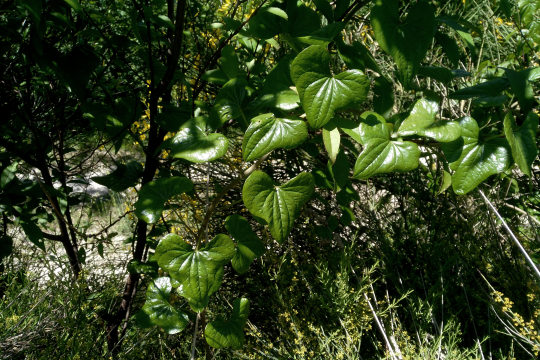






D – Dioscorea communis (L.) Caddick & Wilkin (= Tamus c.) – Tamaro (Dioscoraceae)
13 notes
·
View notes
Text
Sansevieria kirkii 'Silver Blue' | Dioscorea communis
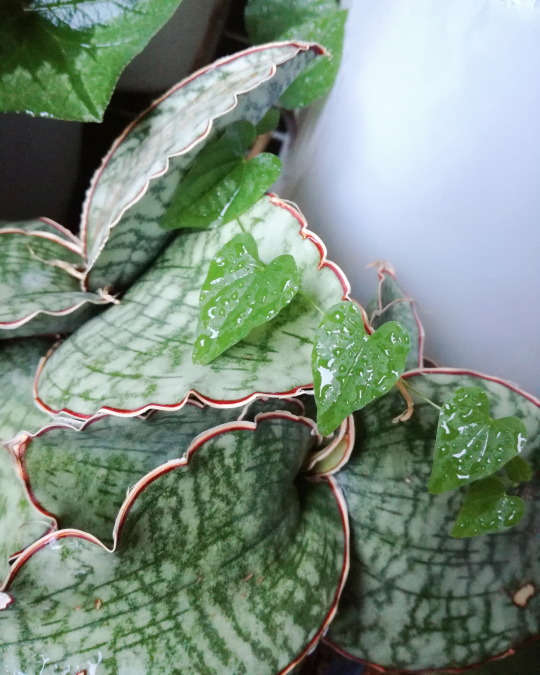
#stefano bonalume#sansevieria#sansevieria kirkii silver blue#sansevieria kirkii#plant#plants#succulent#succulents#green#dioscorea communis#black bryony#tamus communis#dioscorea#balcony garden#garden#botany#botanical
22 notes
·
View notes
Photo
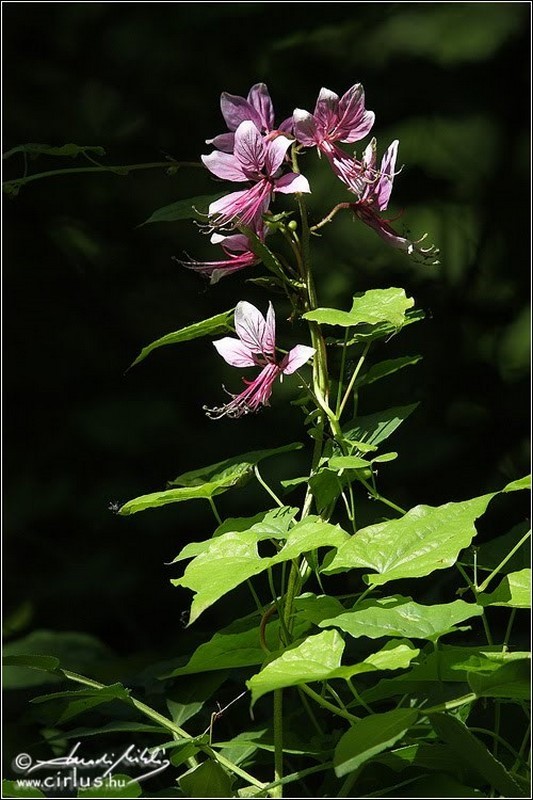
Be my support!
#flower photo#wildflower#dioscorea communis#hold me firmly#Be my buttress!#Be my support!#be my sweetheart!
20 notes
·
View notes
Photo


Tamier commun / Dioscorea communis
Omelette au Tamier commun, ou Herbe aux femmes battues, appelé aussi Taminier, Raisin du Diable, Racine de feu, Reponchon en Occitan.
photo: Pascal Maire (smartphone)
#tamier commun#dioscorea communis#Reponchon#wild plants#asperge des bois#Landes de Gascogne#omlet#tortilla#homelette
1 note
·
View note
Photo

Black bryony (Dioscorea communis). Illustration by: Anaël Moreau et Gaëtan Guerlais (The Feebles). Source: expressionsvegetales.fr.
7 notes
·
View notes
Text
27 August 2019
Black Bryony - Dioscorea communis
It climbs clockwise around the stems of other plants. It has lovely heart-shaped leaves with netted veins. The berries are red when ripe, this one has berries still green. The ‘black’ in the name refers to its black tubers. The plant in my bottom pic has some black leaves - not sure why, may be caused by stress.
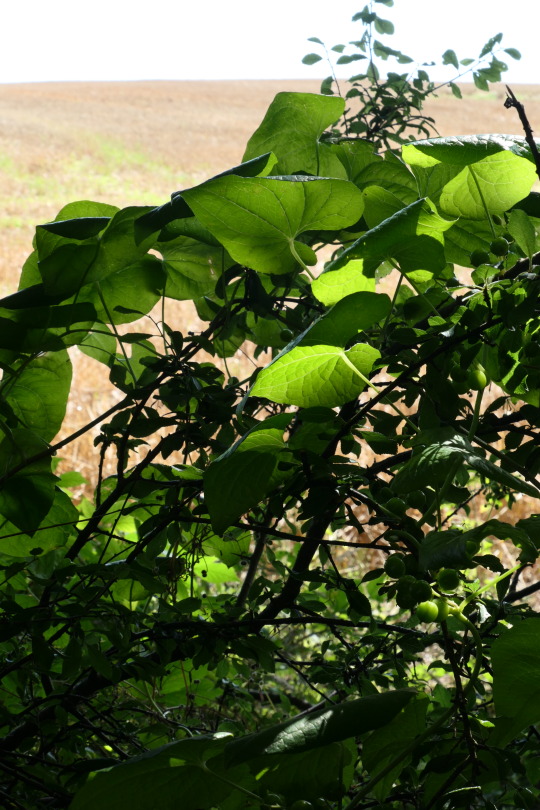


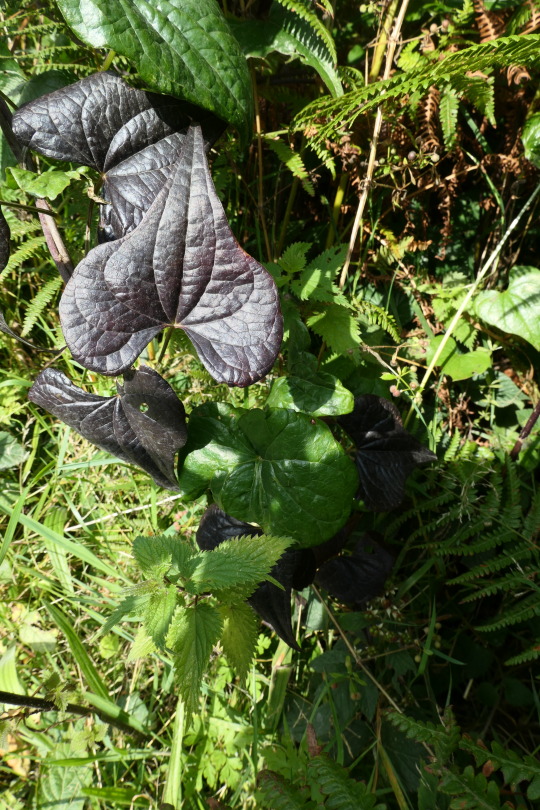
15 notes
·
View notes
Text
John Nash’s Wood Engraving
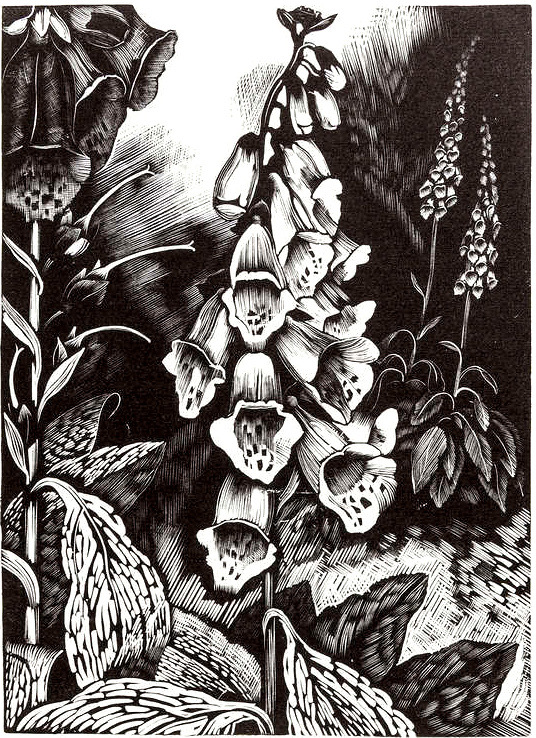
John Nash - Foxglove, 1927
John Nash is more famous for his paintings of the First World War or his later-life landscapes, but as a young man he was a very fine wood-engraver. It seems by nature that wood-engraving at this time follows book illustration and as John’s brother Paul was championing a wave of woodblock revival at this time it is no surprise that in 1921 John became a member of the Society of Wood Engravers, a new society set up in 1920 by Eric Gill, Lucien Pissarro and Edward Gordon Craig. In coming years with more confidence with woodcut John Nash was able to illustrate whole books such a Poisonous Plants, 1927 that features 20 large botanical illustrations.
Many of his prints before 1924 where done to learn the craft and given as gifts but the Golden Cockerel Press asked him to illustrate a book in woodcut and he became professional and and a commercial artist. He would sell these woodcuts as limited editions too.
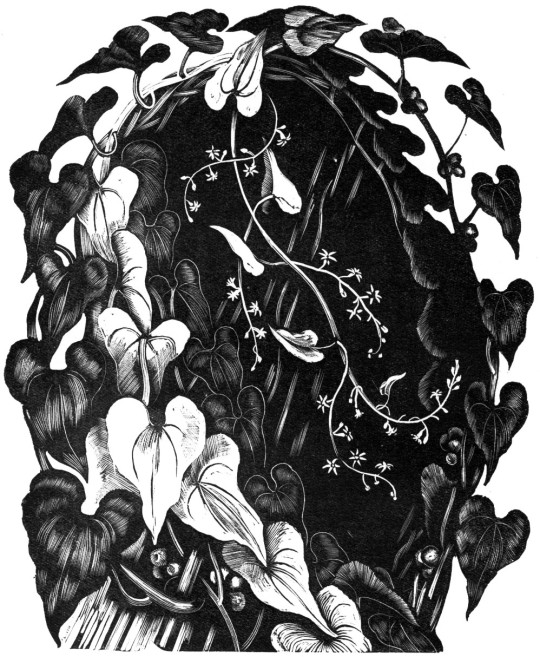
John Nash - Black Bryony (Dioscorea communis), 1927
His innocence and freshness of outlook has led him to emphasise the sharp-cut quality of engraving and this expresses the essence of living and the appreciation of forms. John Nash’s engraving of the human form, of flowers and of plants have a realism that is quite scientific in its observation and crispness of expression. †
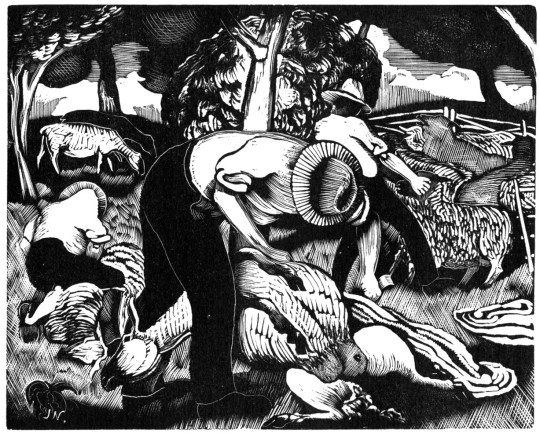
John Nash - Shearing Sheep, 1923
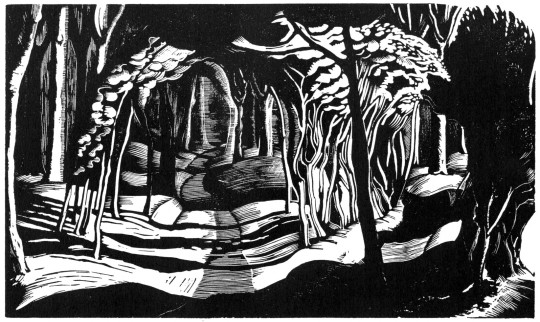
John Nash - Woodland Interior, 1929

John Nash - Spurge-Laurel (Daphne Laureola), 1927

John Nash - Frontispiece for Kathleen Woodward’s Jipping Street, 1928
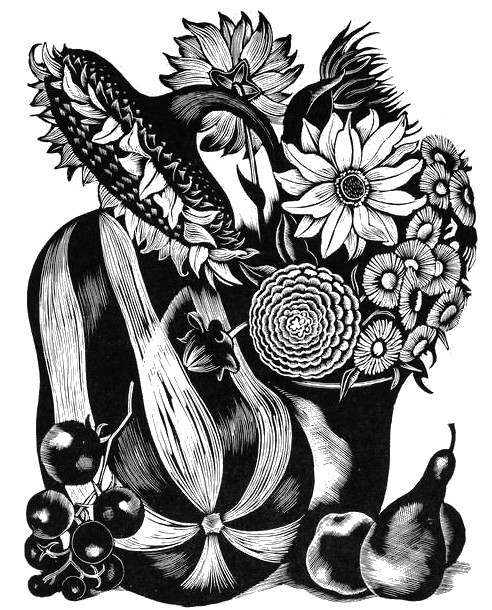
John Nash - Marrow and other Autumn Fruit and Flowers, 1935
'Flowers and Faces' by H.E. Bates, published by the Golden Cockerel Press
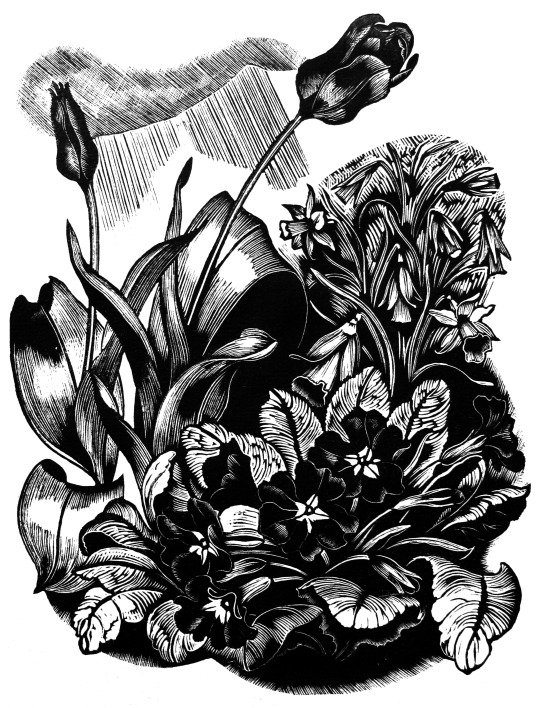
John Nash - Flowers and Faces, 1935
'Flowers and Faces' by H.E. Bates, published by the Golden Cockerel Press
† Albert Garrett - A History of British Wood Engraving, 1978
8 notes
·
View notes
Photo
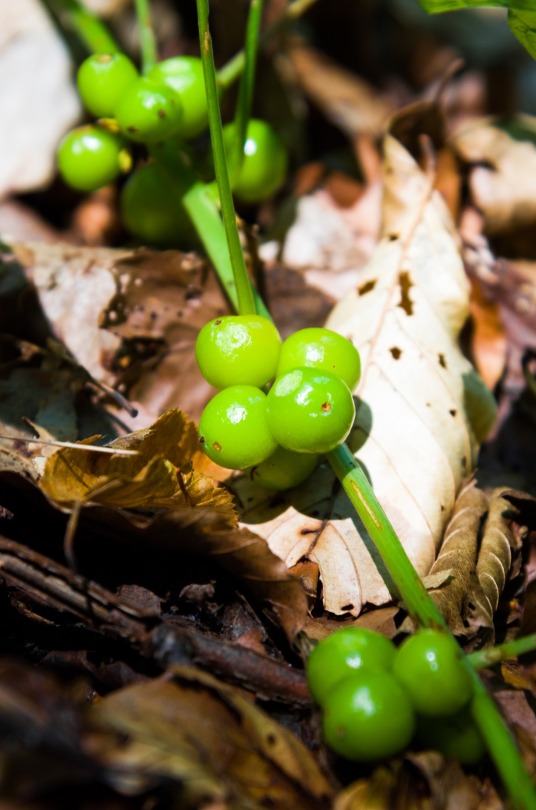
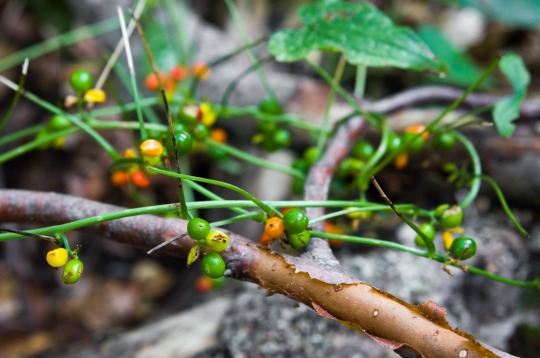
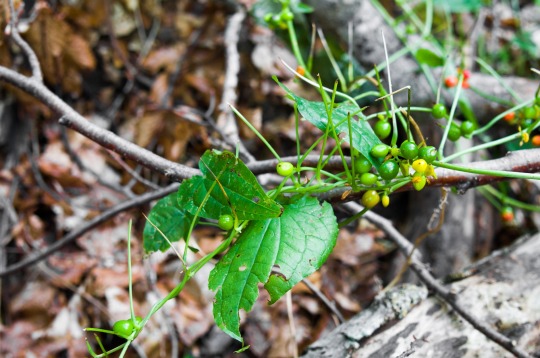
Black bryony (Dioscorea communis) typical poisonous liana of broadleaf forests in Crimea. Its ripe fruits are bright red, but here you can see all shades from green to red.
#Dioscorea communis#Black bryony#lady's-seal#black bindweed#plant#liana#fruit#colour#Russia#Crimea#forest#litter#summer
0 notes
Text
22 questions
Thanks to @old90soul for tagging me! This is actually the first time this ever happened to me haha
Nickname: I sometimes get called Leo (my name is Leona)
Zodiac sign: Libra
Height: 1,64m or 5‘4
Hogwarts House: Ravenclaw all the way!
Last thing I googled: „Dioscorea communis“ (because I wanted to know what the plant look like xD I study pharmaceutics and need to know a good deal about botanics and have an exam soon ahh don’t remind me)
Favourite musician: This is a mean one! There’s too many! But if I have to limit myself to one it’s always gonna be Chris Cornell <3
Last movie I saw: It was a cheesy 80s romantic comedy called „Can’t buy me love“ with Patrick Dempsey in his young years hehe. I’m a sucker for RomComs ❤️
Song stuck in my head: „Cruel to be kind“ by Nick Lowe.
Following now: Idk, I follow a lot of blogs that seem really awesome! Like @chris-cornells-right-tit, @sweetness-doesnt-touch-my-face, @aliveoutshined, @miserychain, @stonegossards-scrunchie and of course @old90soul
Followers: 151 though most are probably inactive because I only recently became active again. I stopped being active in 2015 and started again in February of this year^^ The reason I did is actually because I wanted to catch up on a fanfiction I always used to read and love by @aboysbestfriendishismum 💕
Do I get asks: No but I also rarely ask people something. I am a very passive person with any kind of „social media“. But this year I try to be less shy and quiet haha
Amount of sleep: 5 hours cause it’s always loud in my dorm
Lucky number: 4
What I’m wearing: a short-sleeved shirt cause it’s actually warm in Germany for once whoo
Dream job: after I’m done with studying I want to either work in a pharmacy in a hospital or maybe a pharmaceutical company? But I’m also interested in research so maybe that idk I want to keep my options open
Favourite food: Spinach, pasta, sushi. Not all of those together in one dish of course. Though actually... I wouldn’t say no to that^^ and ice cream I love ice cream!!🍦
Instrument: Guitar. I used to play a lot but then I got chronic epicondylitis in my arm three years ago soo I had to stop sadly. It’s gotten a bit better but now I don’t have as much time :/ though to be honest I was never really good at it! My coordination with hands and brain and stuff is really bad this is also why I suck at video games 🙈
Language: my native language is German. The language I can speak best apart from that is English and in school I also learned French but I forgot most of it already. and I dabbled with learning Japanese. In general I really like new languages!
Favourite song: It changes daily depending on my mood so I couldn’t say. I just like too many. >_< They are all good in their own way. But if I just have to choose a song randomly that I like a lot maybe State of Love and Trust by Pearl Jam
Random fact: I have a twin sister and she doesn’t like Pearl Jam or Soundgarden or any „old music“ o.O (her words). Having the same genes doesn’t mean you‘re the same person!
10 notes
·
View notes
Text
Witchcraft 101: Herbs and Things to Avoid During Pregnancy & Lactation
It is important to note that there are virtually no herbs or herb products that are guaranteed to be 100% safe for those who are pregnant or breastfeeding. Lots of factors play into whether something can be considered safe or not, and whilst one product is fine for one person, it may not be fine for the next.
This is going to be a very, very long post.

Herbs:
Alder Buckthorn (rhamnus frangula): may cause cramps and nausea; long time use may cause a potassium deficiency that leads to complications such as heart problems.
Aloe vera (aloe barbadensis): may induce a miscarriage if ingested.
Angelica (angelica archangelica): may cause womb contractions.
Arbor vitae (thuja occidentalis): may cause vomiting, diarrhoea, asthma, seizures, miscarriage, or premature labour.
Autumn Crocus (colchicum autumnale): this may affect cell division and cause birth defects.
Barberry (barbens vulgaris): may cause very strong contractions and thus, foetal distress. May also cause drops in blood sugar.
Beth root (trilium erectum): may stimulate the womb and cause premature labour or miscarriages.
Black cohosh (cimicifuga racemosa): hormonal and womb stimulating effects may cause premature labour.
Bloodroot (sanguinaria canadensis): may cause nausea, low blood pressure, skin irritation and lethargy. In high doses, this herb can lead to coma.
Blue cohosh (caulophyllum thalictroides): may cause premature labour and developmental abnormalities, heart problems and strokes in a baby. Never take blue cohosh to start labour.
Bugleweed (lycopus americanus): this herb may affect your pituitary hormones.
Caraway (carum carvi): may cause miscarriage, contractions, and premature labour.
Cascara (rhamnus purshiana): prolonged use can cause potassium deficiency and a loss of fluid.
Celery seed (apium graveolens): may cause contractions, miscarriage or premature labour if taken in medicinal doses.
Camomile, roman (anthemis nobilis): may cause contractions, miscarriage or premature labour. It may also cause allergic reactions.
Cinnamon (cinnamomum cassia): Hepatotoxic in large amounts.
Clary sage (salvia sclarea): a strong womb-stimulant. It may cause a miscarriage or premature labour if used before 37 weeks of pregnancy. Large doses in labour may cause foetal distress from strong contractions. Never use clary sage to induce labour.
Clove (sanguinaria canadensis): may cause complications within the liver and problems with blood clotting.
Comfrey (symphytum officinale): hepatotoxic, carcinogenic and may cause abnormalities in the baby.
Devil’s claw (harpagophytum procumbens): may cause miscarriages, diarrhoea, nausea, vomiting, headaches, abdominal pain, allergic skin irritation and changes in the blood.
Dong quai (angelica sinensis): this may cause miscarriages, premature labour, diarrhoea, and sensitivity to sunlight. It may also be carcinogenic in large doses.
Elderberry (sambucus nigra): they may cause nausea, vomiting, or severe diarrhoea if elderberries are not well-cooked before eating. Eating unripe fruit or fruit juice made from unripened berries may cause weakness, dizziness or numbness in the limbs.
Fennel (foeniculum vulgare): may cause contractions, premature labour and miscarriages.
Fenugreek (trigonella foenum-graecum): large amounts of this herb may cause premature labour, miscarriages and contractions.
Feverfew (tanacetum parthenium): this may act as a womb-stimulant, leading to premature labour. It may also cause nausea, diarrhoea or constipation, headaches, abdominal pain and bloating.
Garlic (allium sativa): medicinal doses have the potential to cause miscarriages, premature labour and contractions.
Ginseng, Asian (panax ginseng): may cause developmental problems in your baby.
Ginseng, Siberian (eleutherococcus senticosus): may cause drowsiness, anxiety, irritability, breast tenderness and (in large doses), bleeding from the womb. It can also cause a quickened heartbeat and high blood pressure. Long-term use of this herb may cause sciatica and muscle spasms.
Golden ragwort (senecio aureus): hepatotoxic. May cause developmental problems with your baby, as well as being a womb-stimulant that can induce miscarriages and premature labour.
Goldenseal (hydrastis canadensis): a womb-stimulant that may induce miscarriages and premature labour. It can also negatively affect your baby’s brain development.
Gotu kola (centella asiatica): there is not enough information about this herb to deem it safe for use during pregnancy. Hepatotoxic.
Greater celandine (chelidonium majus): hepatotoxic.
Horsetail (equisetum arvense): can lead to a vitamin B1 deficiency.
Juniper berry (juniperus communis): may lead to miscarriages. Nephrotoxic.
Lady’s slipper (cypripedium parviflorum): hallucinogenic. There is not enough information to deem this herb safe to use during pregnancy.
Liqorice (glycyrrhiza glabra): a womb-stimulant that may lead to miscarriages or a premature labour. It also increases blood pressure.
Lovage (levisticum officinale): potential womb-stimulant that may cause miscarriages or premature labour.
Marjoram (origanum vulgare): in large doses, this may act as a womb-stimulant.
Mistletoe (viscum album): may act as a womb-stimulant (premature labour, contractions, miscarriages) and increase blood pressure.
Motherwort (leonurus cardiaca): may act as a womb-stimulant and induce a miscarriage or premature labour.
Mugwort (artemisia vulgaris): may induce miscarriages, premature labour, abnormalities in your baby’s development, and allergic reactions.
Myrrh (commiphora molmol): may act as a womb-stimulant.
Oregano (origanum marjoricum): may act as a womb-stimulant.
Parsley (petroselinum crispum): may act as a womb-stimulant and cause defects upon birth.
Nutmeg (myristica fragrans): a hallucinogen in large doses, it may also react with pain relieving drugs (such as pethidine) in labour. It may also induce miscarriages or premature labour.
Passion flower (passiflora incarnata): may act as a womb-stimulant.
Pennyroyal (mentha pulegium): hepatotoxic, nephrotoxic, a womb-stimulant. It may also cause dizziness, bloody vomiting, delirium, fits, raised blood pressure and blood-clotting problems.
Peruvian bark (cinchona officinalis): may cause bleeding, problems with vision, headaches, diarrhoea, vomiting and nausea.
Poke root (phytolacca decandra): may act as a womb-stimulant and cause thinning of the blood.
Pulsatilla (anemone pulsatilla): may act as a womb-stimulant and trigger abnormalities at birth.
Rhubarb (rheum officinale): may have a laxative effect that can include gastric bleeding. Long-terms use may lead to potassium deficiency which can bring on weakness and a loss in bone density.
Rosemary (rosmarinus officinalis): may bring on contractions if consumed in large amounts. The essential oil can increase blood pressure and induce seizures in those with epilepsy.
Rue (ruta graveolens): may act as a womb-stimulant and over consumption can lead to kidney and liver failure.
Saffron (crocus sativus): may act as a womb-stimulant if taken in large or medicinal doses.
Sage (salvia officinale): it may trigger bleeding and cause miscarriages. It can also reduce your milk production due to the effect it has on hormones.
Sassafras (sassafras albidum): this herb contains safrole which can induce miscarriages. Carcinogenic, heptatoxic.
Shepherd’s purse (capsella bursa-pastoris): may act as a womb-stimulant and could also lead to thyroid problems.
St. John’s Wort: this herb may cause skin sensitivity, nausea and vomiting, disturbed sleep, constipation and anxiety attacks. There is not enough evidence to deem this herb safe to take during pregnancy.
Tansy (tanacetum vulgare): it may stimulate the womb leading to miscarriage or premature labour. Prolonged use may cause vomiting, fits, kidney and liver damage, breathing difficulties, irregular heartbeat, and loss of consciousness.
Thyme (thymus vulgaris): potential allergic reactions may occur with long-term use.
Valerian (valeriana officinalis): not enough is known about this herb to deem it safe to use during pregnancy.
Verbena (verbena officinalis): may cause digestive upset and allergic reactions.
White horehound (marrubium vulgare): may act as a womb-stimulant.
Wild yam (dioscorea villosa): known to have an effect on hormones, not enough is known about this herb to deem it safe for use during pregnancy.
Wood betony (stachys officinalis): reduces blood pressure.
Wormwood (artemisia absinthium): may act as a womb-stimulant, cause fits and bring about kidney problems.
To be safe, you should avoid oils that feature or are infused with these herbs. As much as most of the problems listed here come from ingesting these herbs, you are likely to absorb some of the essence of them from oils and therefore the risk is still present.
You should also avoid teas brewed with the aforementioned ingredients, for obvious reasons.
Glossary:
Hepatotoxic/Hepatotoxicity: Liver toxicity.
Nephrotoxic/Nephrotoxicity: Kidney toxicity.
Carcinogen/Carcinogenic: Can cause cancer/cancerous growths.
Hallucinogenic: may cause hallucinations.
[Source] [Image Credit]
#herbs#herb#herbal#witch#witches#witchcraft#witchblr#the mori witch#magic#magick#green magic#green magick#green witchcraft#green witch#safe#safety#pregnancy magic#pregnancy magick#pregnancy witchcraft#herb witch#herb magick#kitchen magic#kitchen magick#kitchen witch#witchcraft 101
1K notes
·
View notes
Text
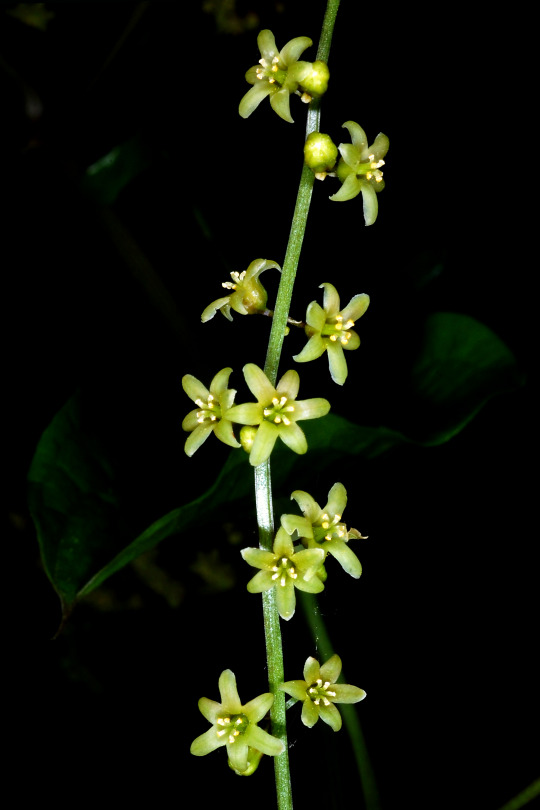
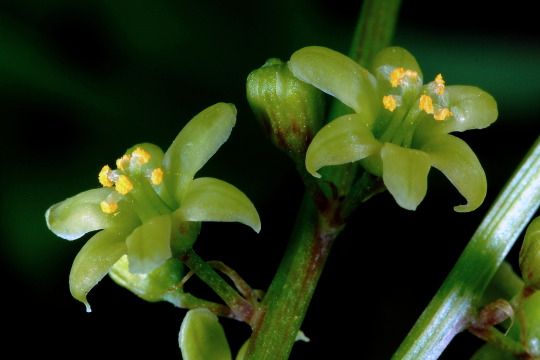
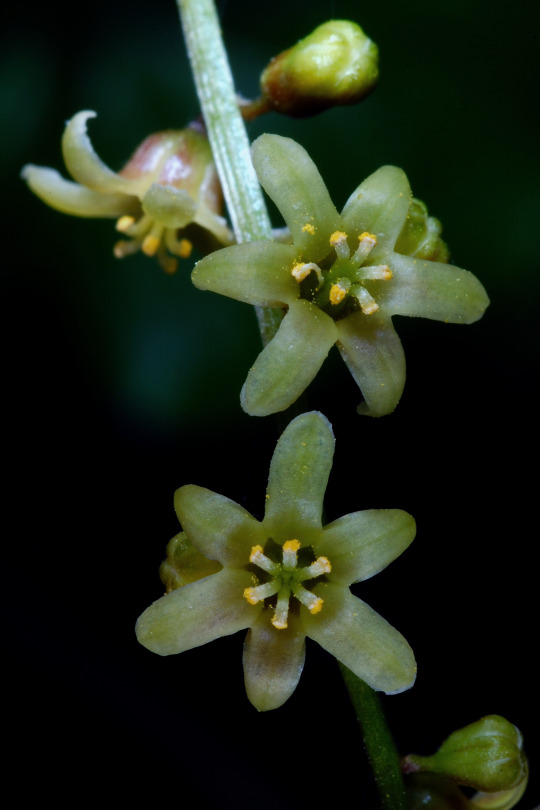
Tamaro (Dioscorea communis (L.) Caddick & Wilkin (= Tamus c.), Dioscoreaceae)
16 notes
·
View notes
Photo

Dioscorea communis
#dioscorea#dioscorea communis#weed#stefano bonalume#wees#woodland plant#woodland plants#nature#balcony#balcony garden#balcony plants#balcony plant#green#shade#glossy#leaf#foliage#climbing plants#bonalume#veins
14 notes
·
View notes
Photo

Dioscorea communis (Syn. Tamus) (Black Bryony). Today’s Poisonous #oneadayplant . Some plants are beautiful and harmless, others are dull and dangerous. Some, like this, when in fruit, are gorgeous, but deadly. In some European countries the young shoots of the plants are cooked and eaten. I do NOT recommend that you try this yourself. ALL parts of this plant are toxic if eaten and it is known to cause contact dermatitis as well when handled, making my gloveless hand in the picture all the more inappropriate. I was fine, but you should, as I did, wear gloves if removing this from your garden. . I think these rounded berries on female plants are very beautiful and are produced in great abundance in a Fagus (Beech) hedge that I have so I carefully remove it each year for new plants to return most years. . A dangerous beauty. . There are quite a number of berried plants native to the UK that will harm or even kill you if you ingest them. As always, unless you are completely sure you know what you are doing, never eat anything in the countryside or garden. All too easy for things to go wrong. Learn your native plants and you will have a useful knowledge base to work from including what to avoid. . This is a perennial climbing plant that grows from tuberous bodies beneath the soil. Leaves are heart-shaped, similar to bindweed. Flowers are pretty insignificant and held on racemes as you can see on the image having been pollinated by a male plant and turned into clusters of berries perpendicular to the stem. . Enjoy from afar. . #poisonousplants #toxic #poisonous #blackbryony #tamuscommunis #dioscoreacommunis #climber #berries #donoteat #uknative #flora #nativeplant #european #plants #weeds #hedge #climbing #tuber #dangerous #wildflower (at Crowborough, East Sussex) https://www.instagram.com/p/CFRfmGDgWIV/?igshid=1x3bu5f0z1e0d
#oneadayplant#poisonousplants#toxic#poisonous#blackbryony#tamuscommunis#dioscoreacommunis#climber#berries#donoteat#uknative#flora#nativeplant#european#plants#weeds#hedge#climbing#tuber#dangerous#wildflower
0 notes